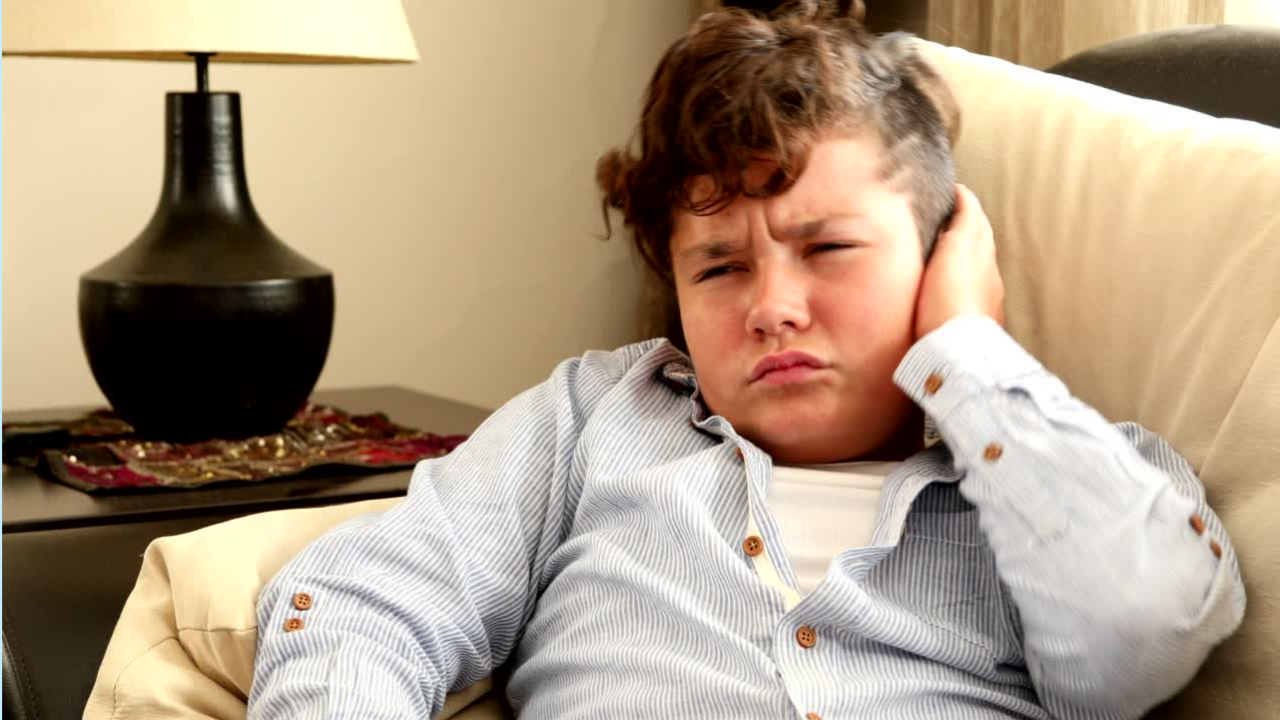You Don't Look Autistic? Parenting a Speaking Autistic Child Blog Series
Oct 23, 2022
“You Don’t Look Autistic”
People may mean “well” when they say “you don’t look autistic” but the question remains “What is an autistic child suppose to look like?” Many people are confused to learn that not all autistic children are nonverbal, not all of them flap their hands, and not all of them play with trains. Many do but not all. Autism spectrum disorder is just that, a spectrum. Autistic individuals are as different and unique as any other human being.

Autism Defined
The American Psychiatric Association’s Diagnostic and Statistical Manual, Fifth Edition (DSM-5) provides standardized criteria to help diagnose ASD:
“a child must have persistent deficits in each of three areas of social communication and interaction plus at least two of four types of restricted, repetitive behaviors”
Criteria 1 - Social Communication and Interaction deficits
Deficits in social-emotional reciprocity, Deficits in nonverbal communicative behaviors used for social interaction, Deficits in developing, maintaining, and understand relationships
What can this look like-
Difficulty making eye contact, answering to your name, or responding when spoken to. A student who has difficulty with conversation this could include starting a conversation or maintaining one. A student who has a hard time with jokes and sarcasm. A literal thinker, many autistic individuals understand language through the literal definition of the words. Difficulty understanding social concepts like authority and people telling them what to do- internally driven. Having a hard time with their tone of voice or nonverbal cues in communication yet they are very sensitive to tone and facial expressions in others. Difficulty making friends or having difficulty maintaining boundaries even being too friendly. They have a hard time understanding someone else perspective.

Criteria 2- Restricted, repetitive patterns of behavior, interests, or activities, as manifested by at least two of the following, currently or by history
Stereotyped or repetitive motor movements, use of objects, or speech,
Insistence on sameness, inflexible adherence to routines, or ritualized patterns of verbal or nonverbal behavior,
Highly restricted, fixated interests that are abnormal in intensity or focus,
Hyper- or hypoactivity to sensory input or unusual interest in sensory aspects of the environment
What can this look like-
A student who is obsessed with trains, monster trucks, Legos, Fortnite or any other object that they enjoy repetitively. They may repeat phrases or asks questions repetitively. They may stem, flap, jump, bounce, or make movements with their body when feeling excited, nervous or bored. They have difficulty with transitions, change or being flexible with others. They have an obsession with time and knowing when things are going to happen. They have a hard time controlling emotions and feel emotions very strongly. Sounds they can not control may bother them although they can make as much noise as they want. They may have a hard time with foods eating too much or too little, picky eater. They have difficulty with sleep, can sleep too much or have difficulty falling asleep. They can have stomach issues and medical complaints of physical pain in their limbs. May have a hard time with smells, sounds, touch and other sensory overload moments- ex. Difficulty in restaurants and loud places.
Why is Autism Misunderstood?
Maybe you have seen the movie Rain Man or The Accountant. You picture in your mind an autistic man with limited verbal skills, awkward social skills, and an obsession with a specific object. Or maybe you watch a commercial during Autism Awareness month and you see a baby in head gear and not able to communicate or look at their parent. Or maybe you have heard your neighbor talk about the neighborhood “weirdo” and say “oh yeah, I think he is Autistic or something”. Misconceptions are hurting the Autistic community.
But what we fail to picture, is the teenage girl, who is social but struggles with friends. Plays soccer and has all Honors classes in high school. We fail to visualize the student who is able to work a job while going to college and has a social circle of friends but still needs support sometimes with life skills like managing their bank account.
Recently in speaking with an Autistic client, she said to me “I wish people would go beyond awareness to acceptance. Sure, you can be aware of what it means to be autistic but do you accept us.” Very powerful words. Many of us have very limited understanding of awareness of what an autistic child looks like.
Many of the clients I work with in my outpatient practice are Autistic. Some were diagnosed during early developmental times due to classic symptoms like not walking on time, talking on time, not making eye contact but others were not so simple to diagnosis.
Late Diagnosis in Girls
Many girls are diagnosed late with autism. They are often early developers and have great verbal skills. In toddler years, they may have emotional responses to frustration and parents tend to think “oh this is just the terrible twos”. Somewhere around school they start to show signs of anxiety, extreme rigidness and difficulty in social play with other children ex. The need to control play. By middle school, these girls are often left out, feel different and struggle with social relationships. They could be over social and have no boundaries as well. It is a spectrum.
Girls are under diagnosed because we tend to view their social problems as just “girls being mean”. A quiet girl is seen as just that “shy” and if she seems anxious “well that is okay too.” Girls also like boys are given diagnosis like Adhd when they start to show difficulty in school with focus and being able to follow directions. Teachers, mostly female, are less likely to report girls as being disruptive in class and are more likely to offer assistance to girls struggling in the classroom.
Missing the Diagnosis in Boys
Boys can also be misdiagnosed with Adhd or other behavior disorders prior to an accurate diagnosis of Autism. Many boys with autism have another mental health diagnosis and often Adhd is noticed first when a student is entering school. Parents and teachers will notice that boys are unable to focus, have difficulty managing their emotions in conflicts with peers, and have very low frustration tolerances.

Early Signs We Need to Talk More About
One early sign of autism for any student is elopement, as about 50% of autistic students have this difficulty at home or at school. Many educators will define this refusal to stay in school or follow directions as oppositional defiant disorder, instead of understanding it as a possible sensory overload moment, a social overload moment, or a need to escape the anxiety they are feeling in the current situation.
Another early sign may be self-harm and hitting oneself when upset. Younger children may bang their head or hit their head while older youth may scratch themselves or hit themselves when angry. Negative self-talk when they have disappointed others or “misbehaved” is often a common theme.
An insistence on things being fair and feeling like they need to make things right is a common theme in Autistic individuals. Making the world right may mean getting back at mom after she told me no to getting ice cream. It could mean getting even with a sibling who is teasing by pulling out their doll’s hair. This need to have balance and to make things “right” can often be seen as misbehavior.
Many autistic youths are very time aware. Aware of how much time something takes, how long we will be somewhere, how long even homework takes. Time is about wanting to not “waste” time on things that are not important to them – internal driven. This can become frustrating to parents and to children when they are not able to have down time or relax. Visual schedules and routines can help children who need to have control of their time and need to know when things are happening.
Proper Diagnosis Matters
When an autistic youth receives a diagnosis, many family members and youth feel a sense of relief. An understanding of why things are the way they are. Your child is not being “disrespectful” with their lack of their eye contact or they are not refusing to go to the restaurant with the family “out of defiance”. Many educators will view a child completely different once they understand that not only does your child have Adhd but that they are Autistic too. It changes how people view your child and their responses to their environment.
So there is no “look” to an autistic child, as they may be on various ends of the spectrum when it comes to social deficits and repetitive behaviors. And as earlier pointed out by a very bright speaking autistic client but acceptance is key.
Dr. Stacy
Check out my resources to include our parenting group Parenting with Letters at www.drstacyhayneslpc.com
Check out The Neurodivergent Universe Series, Josh the Neurodivergent Student and Marcus the Neurodivergent Gamer- books helping autistic students navigate their day with daily missions and strategies on Amazon
Check out my Two-Time Award-Winning Book- Powerful, Peaceful, Parenting- Guiding Children, Changing Lives on Amazon.
Lorem ipsum dolor sit amet, consectetur adipiscing elit. Cras sed sapien quam. Sed dapibus est id enim facilisis, at posuere turpis adipiscing. Quisque sit amet dui dui.
Stay connected with news and updates!
Join our mailing list to receive the latest news and updates from our team.
Don't worry, your information will not be shared.
We hate SPAM. We will never sell your information, for any reason.
